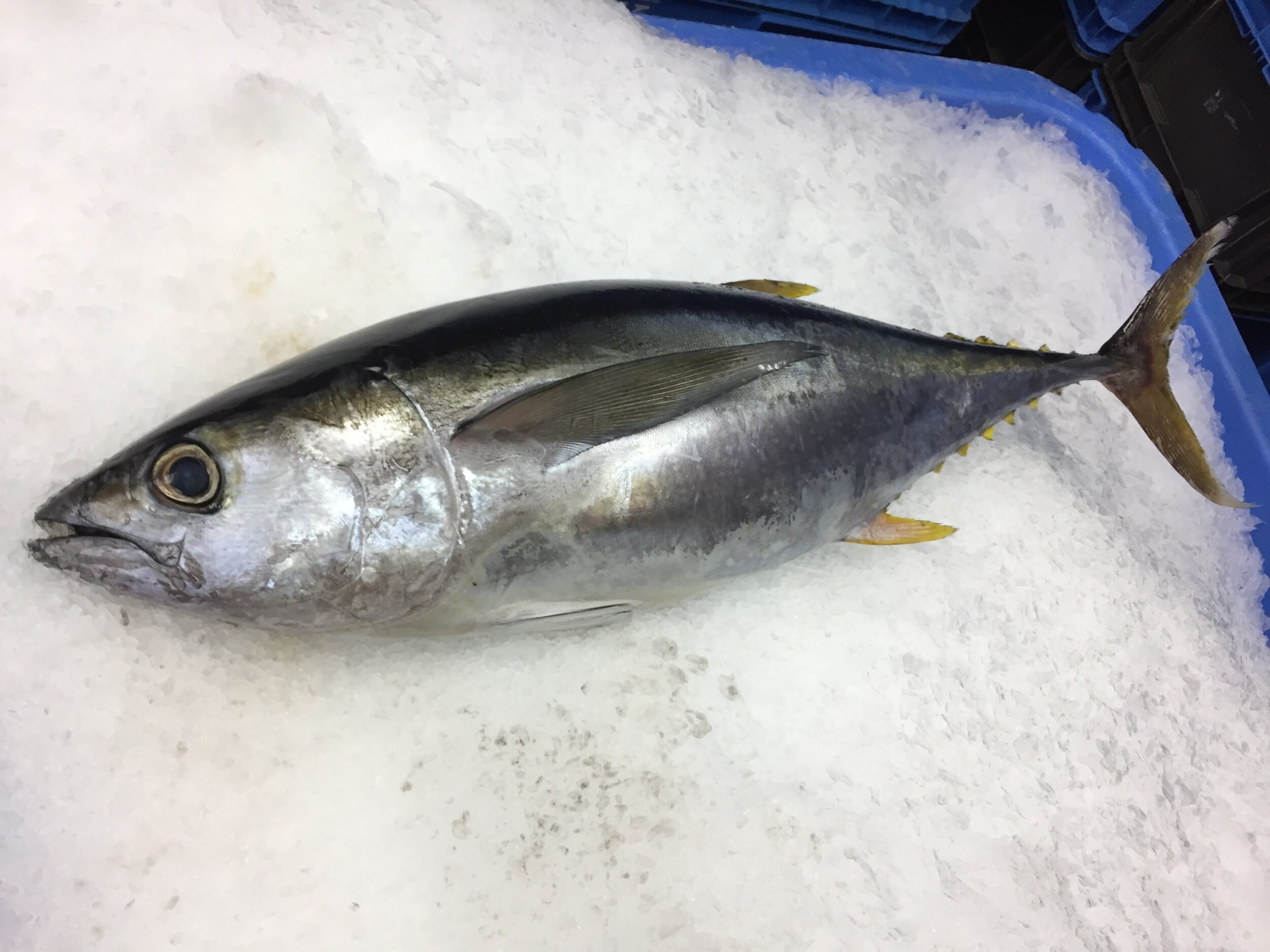Albacore Tuna
Sometimes called Longfinned Tuna, or Tombo.
Availability: Late spring - late fall
The Meat
Oh man... words fail me. BBQ, grill, broil, bake!
Prep
Tuna will always arrive as a chunk of loin. Skin off, bloodline out (unless otherwise indicated). Sometimes we will deliver smoked albacore loin.
Gear and fishery info
All our albacore are caught by hook and line.
#KnowYourFisherman
Our albacore tuna is caught by hook and line on F/V Marlene Rose and F/V Billie Marie II and F/V Jody H
Fish Nerdism 101
Albacore grow fast and die young, living only 12 years and reaching sexual maturity at 6.
Health concerns
It's no secret that tuna, being a large predatory fish that subsists almost entirely on other fish species (and cephalopods) has a tendency to pick up mercury. It should be noted however, that our local albacore are small (read: young) and therefore have not had the time to bioaccumulate toxins. The health benefits of eating these delicious omega-3 saturated fish are considerable. Nevertheless, it would be rare for me to serve you tuna more than twice in a given month.
Parting Shots
Nothing fights like a tuna. There are a number of party boats in The Bay Area that will go for them when they get within 50 miles of shore. This usually happens in July, August and September. Be advised: it's a long, long ride out to the tuna grounds... and it ain't cheap! Nevertheless, it will be an incredible and memorable experience, even if you skunk.
Recipes
Facts
Scientific Name: Thunnus alalunga
Habitat: They are highly migratory and inhabit the open seas and clear water in temperate waters. They are seldom close to shore, and are only caught locally when the water is warmest. Tuna are considered "close to shore" when they are 35-45 miles away.
Diet: Albacore tuna are pelagic predators (open-sea hunters). subsisting mostly in small fish and squid.
Size: local albacore are young, we rearely get them over 50 pounds in our waters.
Range: Occurs in tropical and temperate waters of all oceans, including the Mediterranean Sea, from 50°N to 40°S. The Atlantic and Pacific Oceans both hold at least two albacore tuna stocks (northern and southern), each with distinct spawning areas and rarely crossing the warm equatorial waters.





